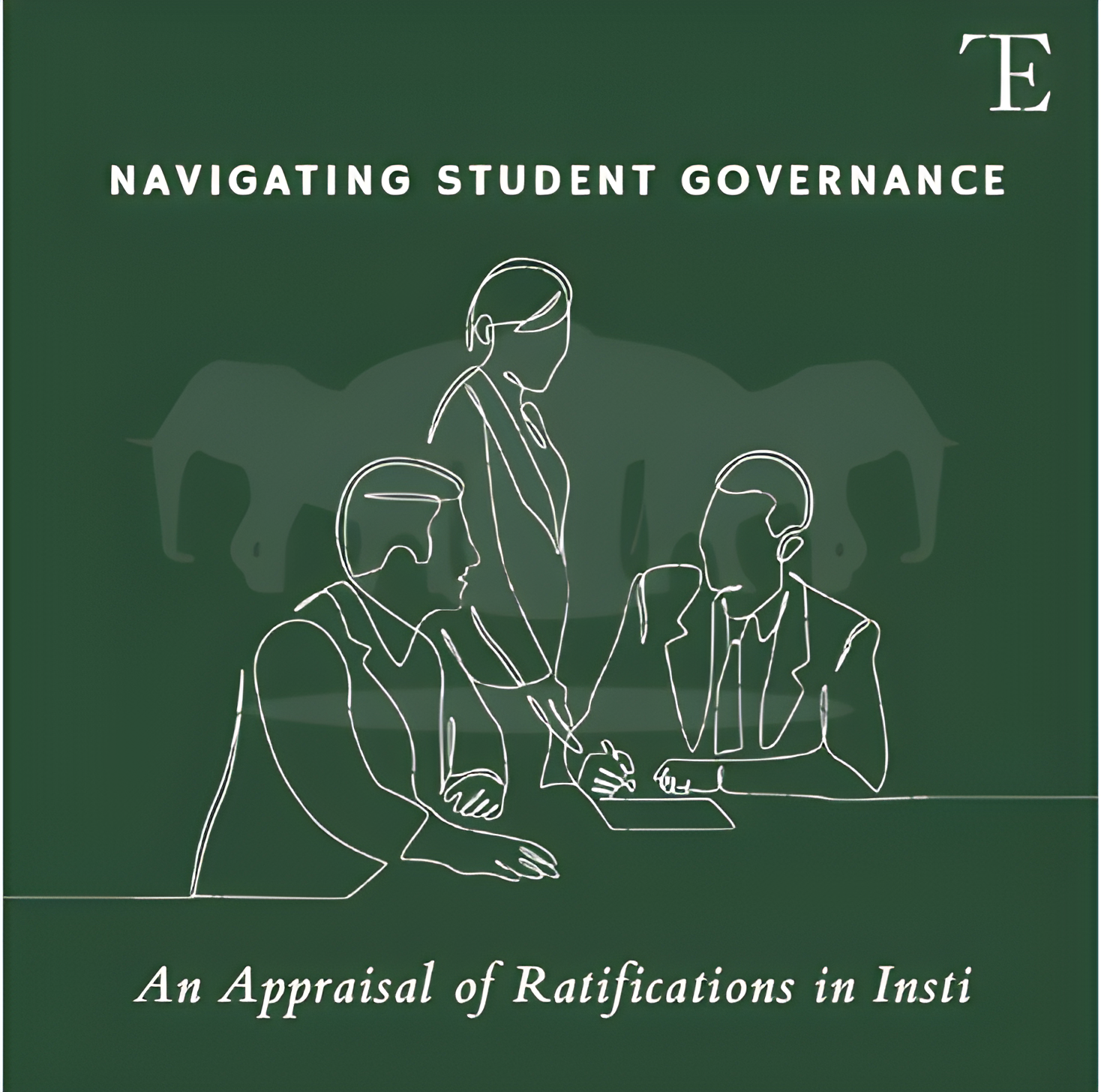Psychiatrist Speaks
By Sharanya Menon and Shweta Venkatesh
Note:
1. The views expressed below are not the official views of IIT Madras. T5E is a student-run publication, editorially independent from the IIT Madras administration.
2. Any content below is strictly the property of The Fifth Estate, IIT Madras. If you wish to re-use part or whole of the article, please contact: Varun Sridhar
– Email: [email protected] or [email protected]
***
“If you have a problem, you have a problem,” says the visiting psychiatrist, Dr. Shiva Prakash Srinivasan seriously. The ‘problem’ referred to concerns mental health issues that are generally pushed aside as unimportant until they loom too large to be ignored. Students must accept it, he says, not try to ignore it and simply push through it. While options for help and support can be provided, the acceptance of it is not something which can be pummelled into a person. It needs to come from within, the suffering student needs to believe in the help that is being offered. Parents, he says, do not know enough about mental health and the problems that beset students. The lack of knowledge leads to an unintentionally insensitive attitude which in turn produces the much-talked-of stigma. Medall and Saathi are two organisations on campus which act as support systems and offer succour to students who ask for it. While Saathi is present at the community level, Medall is staffed with counsellors whom students can approach when they wish.
[pullquote]”While options for help and support can be provided, the acceptance of it is not something which can be pummelled into a person. It needs to come from within, the suffering student needs to believe in the help that is being offered.[/pullquote]
Dr. Srinivasan says that students often visit him as a last resort after having tried various methods to combat mental health concerns. Feelings of inadequacy, he stresses, are not uncommon but students frequently consider themselves damaged in some way or the other if they’re seeking help there. According to him, students in the institute most commonly face adjustment problems that more often than not compounds their anxiety. Most students lead very sheltered lives till they come here and the transition to an independent lifestyle is not smooth for most, hence causing anxiety and other related issues. The amount of pressure and the stress that students endure academically is considerably high and could be one of the several reasons that the students face anxiety and also depression in some cases. For a more in-depth analysis of causes of student stress, read this account of our survey of 883 students.
The symptoms of anxiety disorder could be largely considered as an irrational fear of something. “Imagine a snake is thrown at you, you will react out of fear physically. Now imagine the same reaction, only this time around there is no snake, just plain fear. That is what people with anxiety experience.”
The symptoms of anxiety disorder could be largely considered as an irrational fear of something. “Imagine a snake is thrown at you, you will react out of fear physically. Now imagine the same reaction, only this time around there is no snake, just plain fear. That is what people with anxiety experience.” Palpitations, problems with sleep, nausea, and shortness of breath are some of the symptoms that are related to anxiety disorder. More often than not, people attribute it to stress or something that they experience occasionally, therefore, nothing serious.
So what can the friends, family and acquaintances of those with anxiety or any mental illness do to help? Dr Srinivasan believes that their being there for them and more importantly, letting them know that they are always there for them to talk to or just spend some time with, will help greatly. The importance of support systems cannot be stressed enough and it is fundamental that this very support system plays an active role in ensuring that help is sought for when needed.
Common Mental Health Issues and Disorders
- In this section, we try to provide a (non-exhaustive) introduction to common disorders and mental health issues. The main aim is to increase awareness and aid in recognizing if you or someone you know is facing one of these issues. However, this is not a list prepared by a professional. Please do not try to self-diagnose yourself. Sources: The Mayo Clinic
- If you think you may be suffering from one or more of the conditions below, please seek help immediately from the counsellors, the hospital psychiatrist or yourdost.com. There is no shame in seeking help.

Anxiety Disorders
Generalized Anxiety Disorder
What is it?: This is a chronic type of anxiety that is often exaggerated and acute for no apparent reason. People with the disorder experience feelings of worry regarding family, money, a looming sense of disaster, and are most of the time aware that their feelings are irrational and not warranted for the situation.
Common Symptoms: Startling easily, restlessness, irritability, difficulty concentrating, irregular sleep, easily tired; physical symptoms involve nausea, breathlessness, trembling or twitching.
Social Anxiety Disorder
What is it?: Persons with this condition experience an intense fear of embarrassing themselves in public or in front of other people. They may believe that others are far better than them at socializing or public speaking, and the disorder is accompanied by a fear of doing the same things to the extent that the sufferer goes out of their way to avoid these situations. It is often confused with shyness but is not the same thing at all; shy people may not indulge in avoidance of social situations and people with social anxiety may not be shy with people they know or are comfortable with. The disorder causes one to overthink or exaggerate their feelings of having been judged or minor things that may have been unnoticeable to others.
Common Symptoms: fear of social situations and of being judged or humiliated, avoidance of social performances or situation or enduring them with intense anxiety, dreading upcoming event for weeks, knowledge of irrationality of fear. Fears can be specific such as public speaking, or generalised and pertaining to all social situations
Panic Disorder
What is it?: This is a type of anxiety disorder where a person may experience acute terror or stress in random situations and without warning.
Common Symptoms: Dizziness, sudden unexplained feelings of terror, rapid heartbeat, breathing difficulty, chest pain.
Cause(s): Occurs when the person is under a lot of stress; can get better with medication and therapy.
Specific Phobias
What is it?: Another type of anxiety disorder, this is the fear of some particular thing that poses little or no danger but which may cause the person to experience extreme discomfort and unease when subjected to their phobia, and physical symptoms such as rapid heartbeat.
Common Symptoms: Trembling, shortness of breath, increased rate of heartbeat, acute fear, intense desire to get away from situation.
Some common phobias: Heights (acrophobia), public spaces (agoraphobia), closed/tight spaces (claustrophobia)
Mood Disorders
Depression
What is it?: One of the most common but serious mental illnesses, depression is a condition in which a person experiences a spectrum of negative feelings that keep them feeling low almost throughout. Contrary to popular perception, it is not just a “blues” feeling which lasts for a few days but actually affects one’s lifestyle and living itself. However, no two people’s experiences with depression may be the same.
Common Symptoms: Sadness, loss of interest in activities which were once enjoyed, loss of energy, weight change, difficulty sleeping or oversleeping, thoughts of death or suicide, feelings of worthlessness.
Cause: Can be genetic, environmental, biochemical, postpartum (after childbirth) or psychological. Can also occur seasonally.
Bipolar Disorder
What is it?: This is a serious condition where a person experiences extreme mood swings; they can go from very happy and active to hopeless and down. If left untreated, the condition can adversely affect the quality of one’s life, having a negative impact on job or school performance, family, relationships, and more.
Common Symptoms: “Up” or positive feelings enabling excessive productivity and happiness, suddenly switching to the “low” or negative feelings such as excessive hopelessness, sadness, anger, inactivity. The former is called mania and the latter depression. Normal moods come and go in between.
Eating Disorders
Anorexia Nervosa
What is it?: The condition of losing more weight than is healthy or necessary due to an intense fear of weight gain. Even if already underweight, people with the condition may diet or exercise to lose even more weight.
Common Symptoms: Refusal to keep weight which is normal for one’s age and height, unhealthy or distorted body image, missing periods in women for three or more cycles, shifting food around, refusing to eat before other people, using pills to induce bowel movements or loss of appetite, acutely afraid of gaining weight. Other serious symptoms include loss of bone weight, sensitivity to cold, confusion and slowness of thinking, wasting away of muscle, dry skin and mouth.
Bulimia
What is it?: An eating disorder in which the person indulges in binge-eating and feels a loss of control in this situation, then proceeds to ‘purge’ themselves by inducing vomiting, taking laxatives or diuretics, or exercising rigorously which is then accompanied with a sense of relief.
Common Symptoms: Eating large amounts of high calorie food in secret without control, several times a day, and feeling disgusted with oneself; ingesting laxatives or other medicines to rid oneself of the binge eating, inducing vomiting, seeing oneself as overweight even when they are of normal weight.
Binge Eating
What is it?: Linked to bulimia, this condition is one where a person consumes excessive food or calories in a short period of time and feels a loss of control in this situation.
Common Symptoms: Eats 5000-15000 calories in one sitting, snacking frequently.
Causes: Unknown, but sometimes result in bulimia where the person forces themselves to vomit. Sometimes occurs during or after a diet.
Personality Disorders
OCD
What is it?: People with this condition feel upsetting and repeated thoughts called obsessions, and do the same thing repeatedly to make these thoughts go away, called compulsions.
Common Symptoms: Obsessions – fear of germs, being hurt; compulsions – excessive washing of hands, cleaning, counting.
Borderline Personality Disorders
What is it?: BPD impacts the way one thinks and feels about oneself and others, causing problems to function in everyday life. It includes a pattern of unstable intense relationships, distorted self-image, and extreme emotions and impulses. Borderline personality disorder usually begins by early adulthood. The condition seems to be worse in young adulthood and may gradually get better with age. With treatment, people can improve over time and learn to live satisfying lives.
Common symptoms: Intense fear of abandonment (sometimes going to extreme measures to avoid real/imagined rejection), a pattern of unstable intense relationships, rapid and extreme changes in self-image, periods of stress-related paranoia, engaging in impulsive and risky behaviour, self-injury often in response to fear of rejection/separation, wide mood swings that can last between hours and days, periods of intense anger.
Antisocial Personality Disorders
What is it?: Sometimes called sociopathy, this is a mental illness in which a person has a long-term history of being able to manipulate and exploit other people and violate their rights; often criminal behaviour.
Common Symptoms: Manipulative, lack of remorse, substance abuse, repeated breaking of law, anger, arrogance.
Psychotic Disorders
Schizophrenia
What is it?: This is a severe and lifelong disorder where the person’s life can be affected adversely. Symptoms can be treated with medicines, however, and with the proper medication and therapy improvement is possible in order to live a normal life.
Common Symptoms: Hallucinations, hearing voices, delusions, attention and memory problems, difficulty expressing emotions and speaking, unusual perceptions.
Post Traumatic Stress Disorder (PTSD)
What is it?: This is a condition experienced by those who have been through a particularly jarring or traumatic time or experience, such as war, sexual abuse and rape, witnessing or being in a bad accident, hurricanes, floods or other weather disasters, and more. The condition manifests itself after these experiences are over, as a consequence of them.
Common Symptoms: Flashbacks like the event is happening again, stress and feeling worried, angry or other outbursts, trouble sleeping or nightmares, feeling alone, guilty, or sad.
Substance Abuse and Addiction
What is it?: Often, substance abuse and mental illness go hand in hand; one may develop a mental illness as a result of abusing substances, or one may develop an addiction towards a particular substance as a means of coping with their mental health issues. While it may not always be easy to recognise signs of substance abuse, a key thing to look out for in someone else is unexplained absences or drops in performance, behavioural changes, unexplained shortage of money, changes in social life, changes in sleep and appetite patterns, deterioration of physical grooming and appearance, bloodshot eyes or abnormal pupil sizes very often, among several others. A problem with substance abuse calls for attention to underlying issues a person may be facing which often require help. Among college students especially, substances such as alcohol and certain drugs become a means to cope with academic or other forms of pressure.



